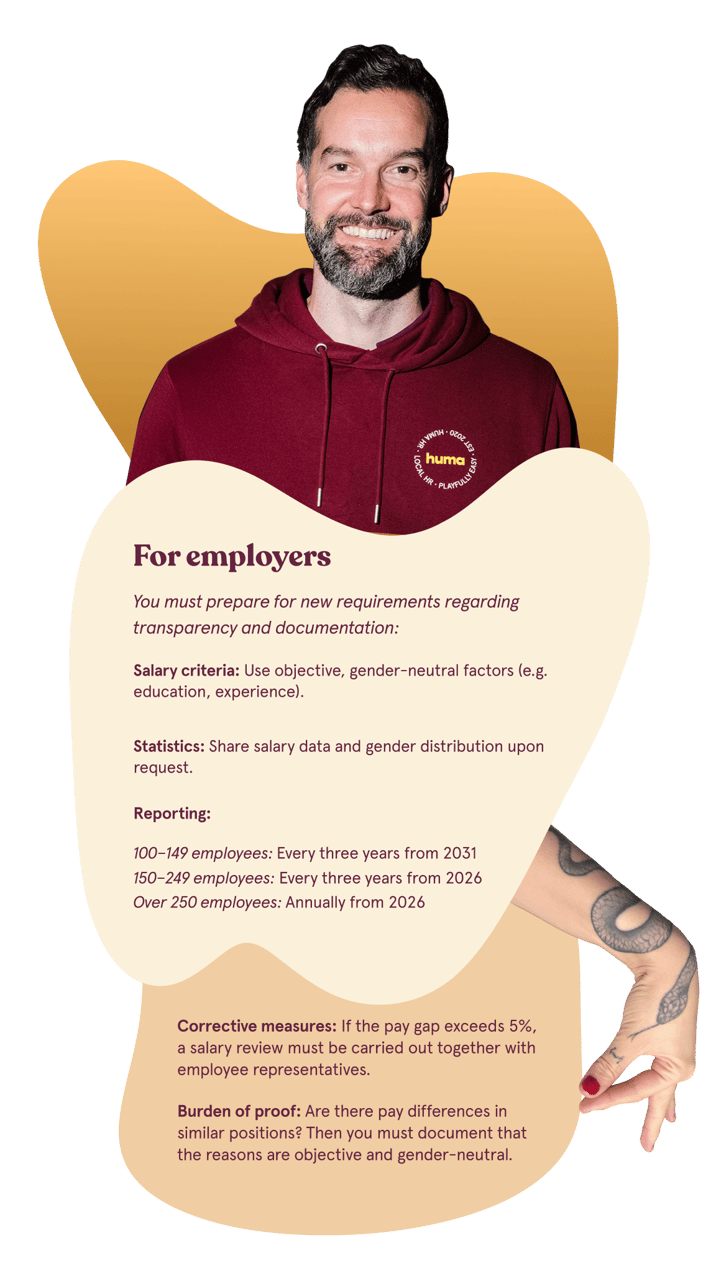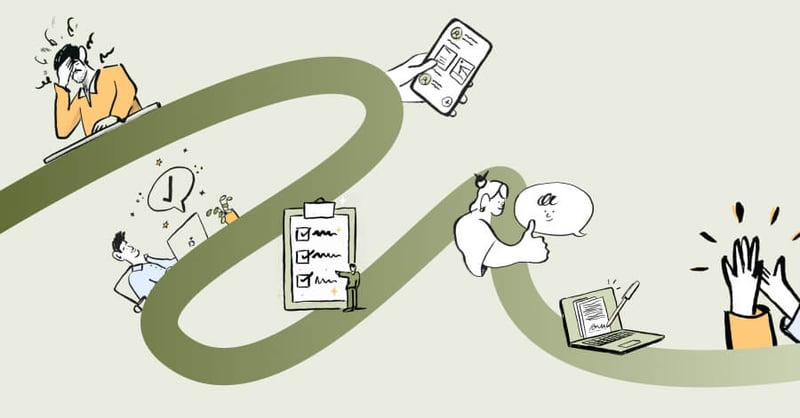There is a wage gap in Europe. Unequal pay for equal work. And it won't close on its own. That's why the EU introduced a new directive in 2023 to make pay more transparent - and fair. The aim? To close the gap between the sexes.
Now we're approaching 2026 and the deadline for implementation. But what does it really
mean for you - whether you whether you're running a business, an employee, or looking for
a new job? We explain.
Why are we talking about this?
Figures from the EU show that, on average, women earn 12.7% less than men - and it's been that way for over a decade. It's not just about who works where, but also about positions, sectors and how visible the pay gap actually is.
Even within the same company there are gaps - despite the fact that equal pay has been a European principle since 1957. So what's standing in the way?

|

|

|
| Sector distribution: Women are overrepresented in low-paid occupations. |
Unpaid work: Women work more unpaid hours than men. |
Glass ceiling: There are still invisible barriers that make it harder for women to reach senior management positions. |
The EU believes that transparency around pay is key. And this is where the new directive comes in.
What is the directive about?The main goal is to make pay structures more transparent and fair. The directive applies to both private and public companies, and all types of employment or working relationships. |
|
|
What does this mean for you?



What should you do now?
Here is a small checklist:
✅ Review your pay structures. Are they gender-neutral?
✅ Set up a system for collecting and analyzing salary data.
✅ Provide training to managers and HR managers.
✅ Involve and inform employee representatives.

What happens if you don't follow the rules? ☝
Failure to comply can result in legal consequences, including claims for financial compensation for pay discrimination.
It could also damage trust within the company - and weaken its external reputation.
What exactly is the goal of the Equal Pay Directive? 🤔
The directive is not a "wage driver", but a fairness tool.
It aims to make it easier to spot (and fix) unfair pay gaps between genders - especially in similar or comparable roles. It can also help to weaken the glass ceiling.
Although the directive does not remove all structural inequalities in working life, it is a powerful instrument for more fairness in everyday life.
Frequently asked questions 💭
Does this apply to small businesses?
Some requirements only apply to companies with over 100 employees, but all businesses must adhere to gender-neutral pay criteria. Any exemptions for small businesses are determined by each member state/country.
Can employees demand pay transparency?
Yes, but only for structures and averages - not individual salaries.
Can my company be fined?
No. Non-compliance can lead to liability and legal action.
What does this mean for recruitment?
Job applicants should be provided with salary information early in the process. This can affect how you do advertisements and interviews.
Sources:






